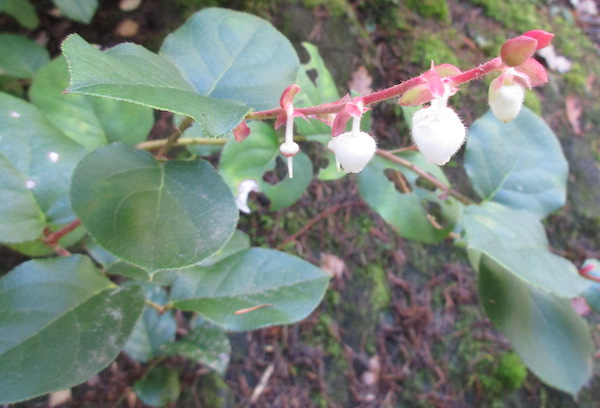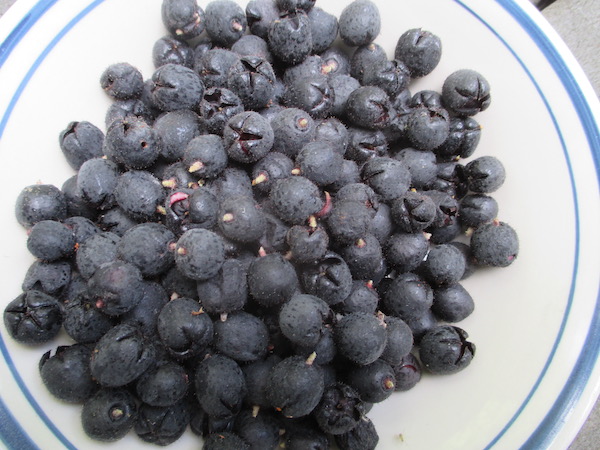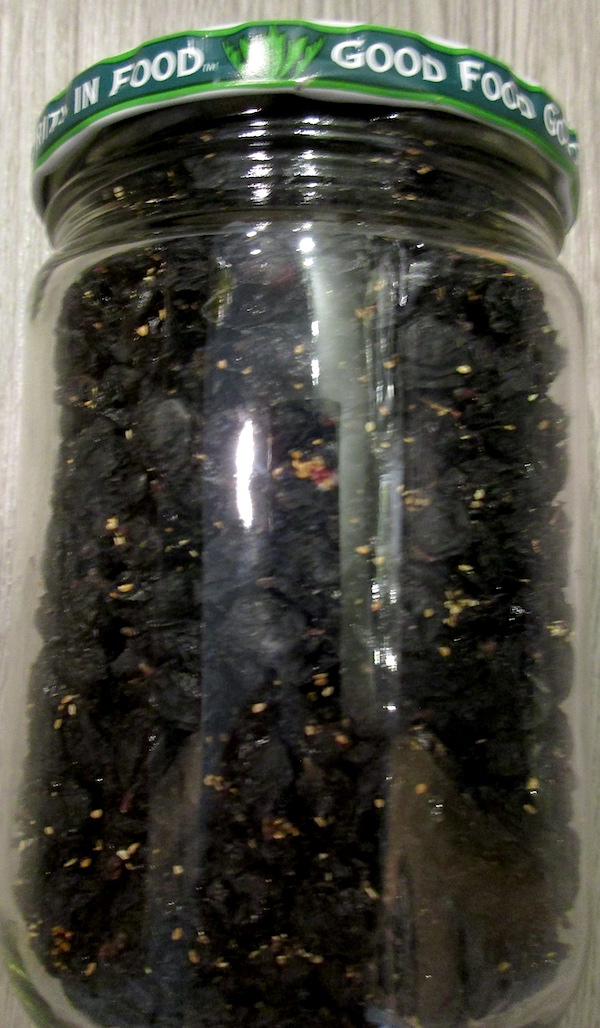Plant of the Month: July 2024
|
Salal
|
Gaultheria Shallon Pursh
|
ERICACEÆ; Heath Family
|
| Salal may be Seattle's most important and common native shrub. In Pacific Northwest forests three common evergreen groundcovers prevail: Sword Fern, Salal, and Low Oregon-Grape. They are so ubiquitous that we all should be familiar with them. Salal ranges from Alaska and B.C. into California. It is abundant in habitats varying from moist, densely shaded woods to arid, sunny, windswept bluffs. In general, it is more common on well-drained soils. Its root suckers spread, forming clumps that sometimes cover acres of land, especially in association with Madrona trees. In gardens, it will spread into mowed lawns, and crowd out adjacent garden plants. In November 1998, I saw it being burned in a bonfire in southwest Ireland, because it was invasive weedily there. |
| Salal reaches 3 to 8 feet tall usually, but in great age it can reach about 20 feet; its trunk can reach 9 inches in thickness. The twigs are minutely bristly, bearing alternate oval leaves, commonly about 4 inches long but reaching up to 7 inches on strong shoots. Thick and firm, they are fringed with delicate, bristly teeth. April into July is the main blooming period, which can continue into September or even mid-November. The flowers are pink or white, small, urnlike, and glandular, in drooping clusters. They give rise to sticky dark purplish or blackish edible berries that are juicy and ripe from early July into December. Some people and many kinds of wildlife value them; native Americans ate them in quantity. Florists use the greenery. The plant has been called Salal by whites since at least 1805, and variations thereof by native Americans long before then; other names are Lemonleaf and Shallon. |
| The genus Gaultheria is widespread globally (not Europe & Africa), with some 290 species. All species are evergreen shrubs. Most species like coolness, acid soil, part shade, and adequate moisture. Salal may bear the largest leaves, and can grow as tall as any, though is rivalled by the Asian Gaultheria fragrantissima, not related closely to Salal; the source of Indian wintergreen oil. Salal has hybridized, and some cultivars have been named, such as Cascade Sunrise®. |
Over the years, I have eaten tender young Salal leaves raw. Its ripe berries are good raw, but most often I variously dehydrate the berries into raisins; add them to pies; infuse them 3 or 4 months in vodka to make liqueurs. In client gardens, and in my own ex-garden, I prune Salal to control its size, trying to encourage maximum floral and berry production to slow its exuberant vegetative growth. Though Salal looks attractive, it is not ideal as a fruit producer; superior shrubs, brambles and small trees exist.
Back
|

Salal in bloom; photo by ALJ
|

Salal flowers up close; photo by ALJ
|

Salal with variegated leaves; photo by ALJ
|

Salal in fruit; photo by ALJ
|

Salal fruit up close; photo by ALJ
|

Salal fruit harvested; photo by ALJ
|

Salal raisins (8 ounces from 24 fresh ounces); photo by ALJ
|
|
|

